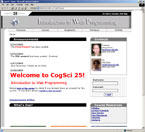 |
|||||||||||
|
COGS 87 - Designing Environments
We are looking at the diverse way people interact and move through their environments and to look for design guidance that can help us build a better lab environment, work environment, study environment, games environment, and educational environment. We want to explore the diversity of environment spaces that are created for people to live in, work in, find information in, and play in. We want to investigate ways that we can bridge the digital and physical divide by embedding digital objects into our everyday environments.
Each lecture covers a particular type of environment, such as living rooms or kitchens. In each of these, the students are challenged with a fun activity of creating a digital solution to a possible problem that occurs in one of these environments. They are free to use their imagination to best bridge the digital-physical divide.
Course
Website |
||
|
||
Future Environments
In this lecture we introduce the concepts of digital supports in environments that exist currently. We look at wearables such as a gps locator watch. We then look at tools for your home such as an automatic vacuum cleaner. Lastly we investigate the tools for your work, such as an interactive desk. Each of these three topics introduces the students to the ideas behind digital supports.
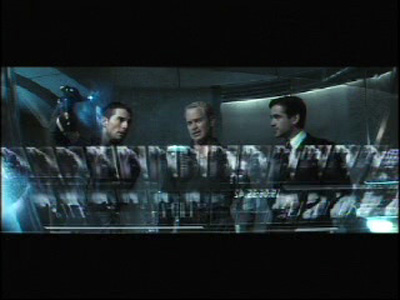
| In Minority Report we see an idea of the future- gesture based interfaces. |
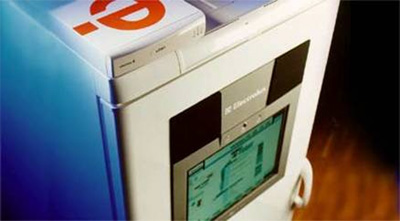
| NetFridge is another view of the future. Think a fridgerator that orders milk for you when you run out and also tells you when your vegetables have gone bad. |
Augmented Reality
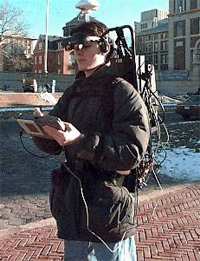 |
|
|
|
The ultimate goal is to create a system such that the user can not tell the difference between the real world and the virtual augmentation of it. To the user of this ultimate system it would appear that he is looking at a single real scene.
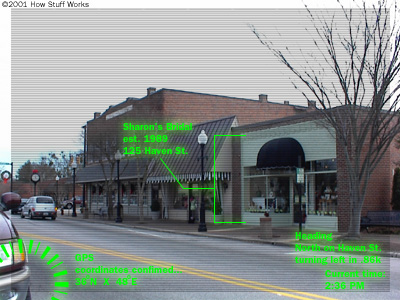
| Projecting information about the outside world on your windshield while you are driving. |
Ubiquitous Computing and Context Aware Computing
In this lecture we will explore how we can take full advantage of raw computer processing power by moving beyond the desktop computer that we have become accustomed to. Instead of working within the computer's world we must move the computer into our world. This is the basic principle of Ubiquitous Computing. The physical and social situation forms the context. Context Aware Computing is thus when digital systems provide appropriate reactions according to a user's context (ex: time, place, personal preference, events, etc).
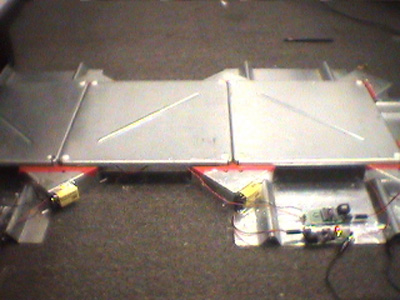
| Floor sensors can be used to track who comes in and out of a room. They can also provide valuable information so that the environment can determine what temperature, lighting, sound, etc settings will be ideal for its inhabitants. |

| RFID's use radio frequency signals for tracking. They have a plethora of uses: tagging baggage to prevent losses, conducting transactions without cash or coins, rapidly scanning mass inventory, and alerting employees when item stock is low. What makes RFID's a particularly attractive technology is its diminutive size. |
Living Rooms
The living room is not an activty specific room such as a kitchen or a bathroom. People partake in all kinds of activities in a living room. Some of these many activities include sleeping on couches, watching television, playing video games, as well as talking to each other.
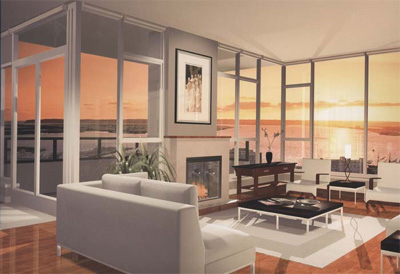
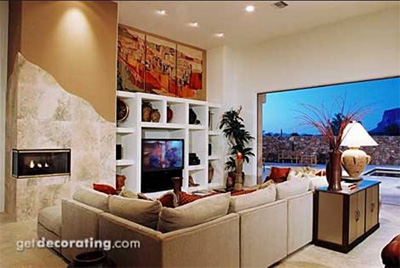
Kitchens
Kitchens are not limited to just preparing and cooking food. Refrigerators store and preserve food, dishwashers clean and store dishes, and tables allow people to socialize and eat food. Although the main function of a kitchen is to prepare food, much of the possible digital supports of a kitchen do not have to involve cooking food.
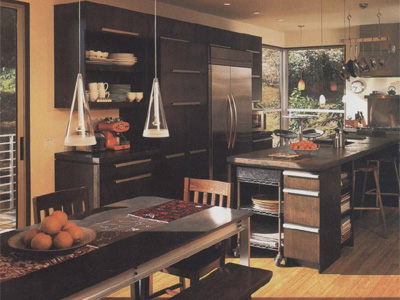
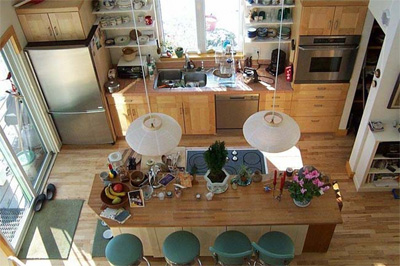
Office and Work Environments
A company's culture is evident from its workplace setup. Its exterior often brands the company for outsiders to see and for employees to feel like a member of a collective whole. Personal workspaces can be private or open. Hallways are often places for collaboration.
It is no secret that people have different working styles. We will examine the impact of diverse styles on both an office's social atmosphere and setup.
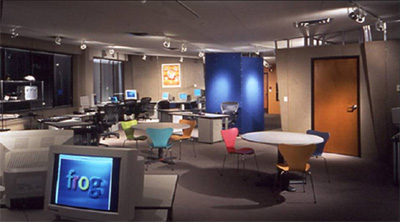
| On open work space that encourgages collaboration. |
Meeting Rooms
How can we design environments to encourage collaboration? What steps can we take to ensure that collaboration is productive and efficient? We will take a look at different types of meeting spaces and think about some of the ways we can use digital supports to make collaboration more effective.
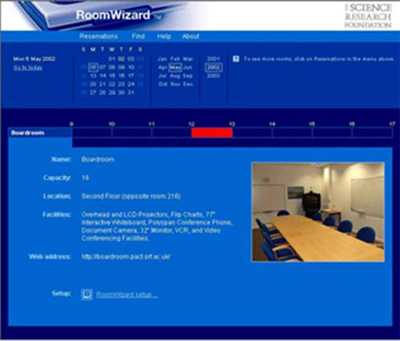
| We examine SteelCase's RoomWizard, one solution to room reservation hassles and meeting interruptions. |
Bedrooms and Bathrooms
People spend so much time in their bedrooms and bathrooms sleeping or enjoying relaxing activities, yet much of the digital supports focus on living rooms, offices, and kitchens. The bedroom and bathroom can be very private and intimate places. In this lecture we will take a look at many luxury bedrooms and bathrooms as well as some bedrooms and bathrooms from different cultures.


Entertainment Venues
We pay to be entertained. People want their experiences to be worth their money. In this lecture we look at how amusement parks, Las Vegas, and home theater environments act as entertainment venues.

| What makes Disneyland so magical? |

| What makes Las Vegas the City of Sin? |
Navigation and Entry Points
What cues aid navigation? We examine different navigation cues and what makes entrances attractive and appealling.
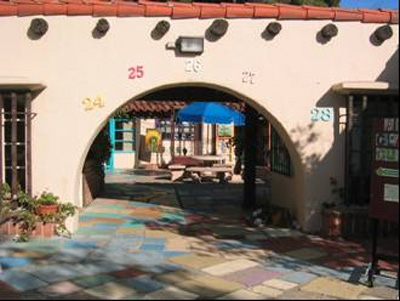
| Follow the colors to your destination. |
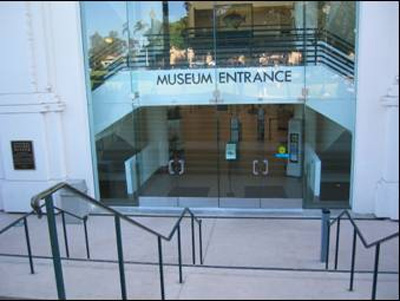
| Would you enter here? |
|
|
|
|
|
|
|


